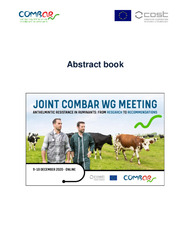| dc.description.abstract | The worldwide increased difficulty to contrast gastrointestinal nematode (GIN) infections in sheep, due to growing anthelmintic resistance, has led to find alternative helminth control strategies. This study aimed to evaluate the in vitro ovicidal activity of essential oils (EOs) of Juniperus communis and Achillea millefolium (two chemotypes) against GINs of sheep. For this purpose, the nematode eggs were collected from naturally infected sheep by GINs in two farms located in Southern Italy. The egg hatch test (EHT) was performed at six different concentrations (50, 12.5, 3.125, 0.781, 0.195 and 0.049 mg/mL) for each EO and compared to the positive control (thiabendazole, 0.025 mg/mL) and the negative control (Tween 80 3%, v/v). In both farms, coprocultures revealed the presence of four genera of GINs: Haemonchus, Trichostrongylus, Teladorsagia and Chabertia. The inhibitory effect on GIN eggs’ hatchability varied from 81% to 96.75% for J. communis EO. When using A. millefolium EO, the ovicidal activity against GIN was 46.5-99.5% (type 1) and 69.6-97.25% (type 2). Furthermore, the effect of tested EOs was very high at concentrations of 50 mg/mL (96.75%), 12.5 mg/mL (95.5%) and 3.125 mg/mL (94.75%) of J. communis EO, whilst for A. millefolium EO at concentrations of 50 mg/mL (99.5%), 12.5 mg/mL (98.0%) and 3.125 (95.25%) (type 1), and 50 mg/mL (97.25%) and 12.5 mg/mL (90.0%) (type 2), showing a similar effect (p>0.05) to the positive control (98%). Therefore, the findings of this study showed the anthelmintic potential of the tested EOs and highlight the importance of ethnopharmacology to control GIN infection in sheep. | sr |

